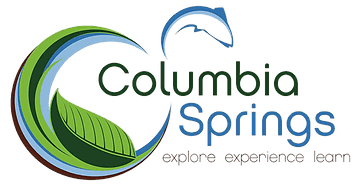The drive home with your stocking full of baby salmon was successful! You covered your tank, spread out a single layer of tiny pink eggs onto the gravel, posted baby salmon photos on Facebook. Awww!
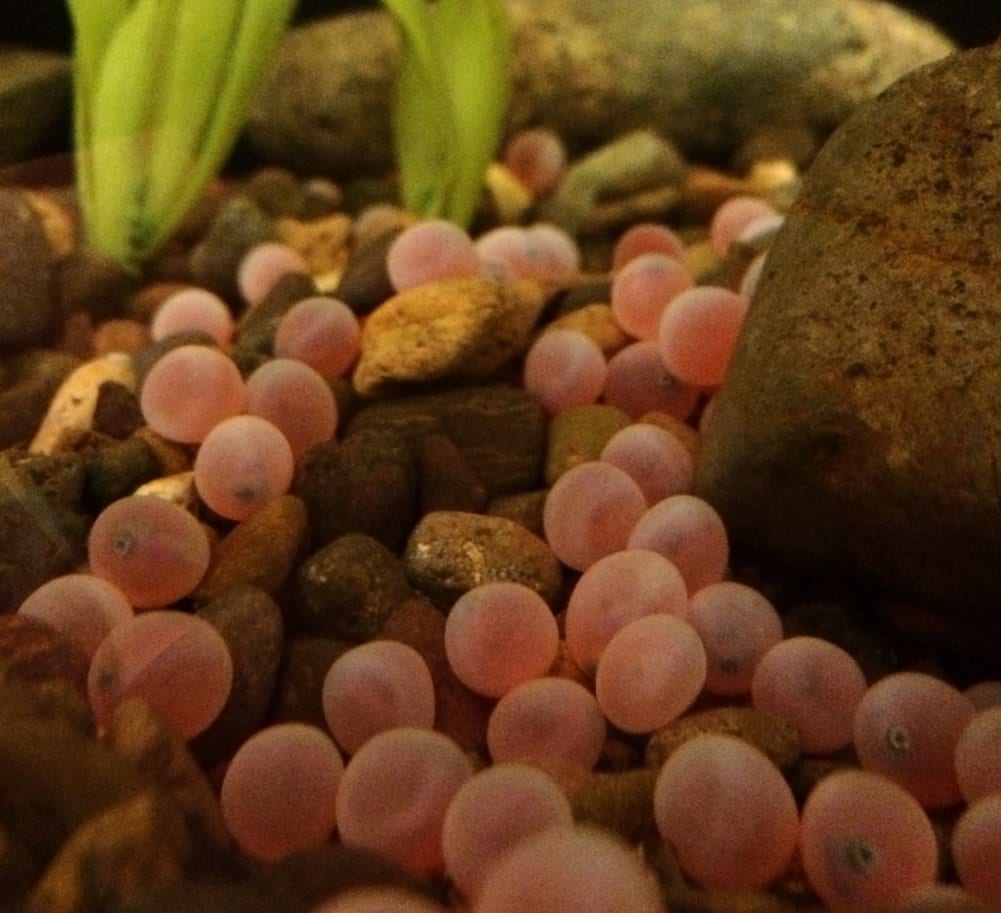
… Now what?
There’s SO MUCH you can do to engage your students during EGG season! Here are 2 activities you can start from Day 1 of raising salmon eggs, both of which can set the stage for discussions down the road about salmon habitat and stewardship.
Talk to you kids about temperature! Temperature is everything for your salmon, from the egg stage all the way to returning adult spawners. Temperature determines when eggs will hatch, when alevin start swimming, the timing of migration, and whether salmon can survive in streams! Start off your salmon season by emphasizing that temperature affects salmon at ALL life cycle stages. Presumably, at some point your class will talk about what salmon need from their habitat, and how we can be good stewards of our environment. This activity can serve as a reference point for future discussions about stream health. If your students have a solid understanding of why temperature is so critical for salmon, they may have an easier time thinking through questions such as:
- Why do we record stream temperature on our watershed monitoring field trips?
- What’s the big deal about planting trees, anyway?
It’s also a great way to support NGSS learning! Sure, you can predict the hatch date with no EVIDENCE, but is that what a scientist would do? Recording daily temperature is a great way for students to engage in scientific practices.
Countdown to Hatching is easy. You’ll need:
- a thermometer placed where your kids can see it
- blank datasheet and writing utensil for recording temperature and observations (p4 of lesson plan)
- the Temperature Units when you picked up your eggs
- something that shows the Temperature Units needed to hatch (p6 of lesson plan).
Here’s what it looks like on my tank:
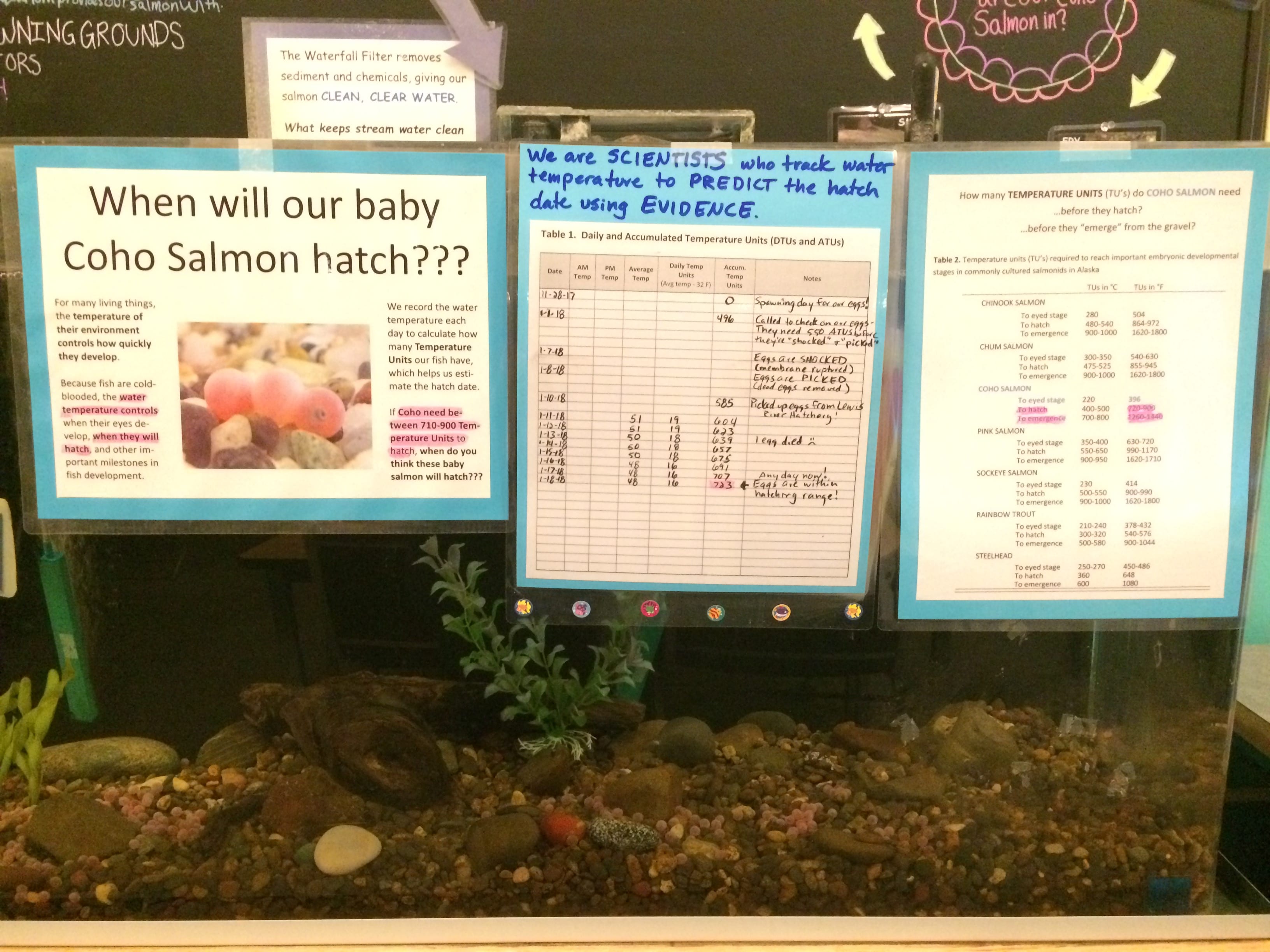
If your eggs are already in the hatching window (720-900 TUs), you can always track temperature and predict when the alevin will “emerge” from the gravel and start swimming around (1260-1440 TUs). This developmental milestone is also determined by temperature.
What’s the Salmon Survival Rate at Each Life Stage?
Did you count all you eggs? I did! I have 272 little babies. I love how teacher Mike Clapp describes his aerial photo activity:
The eggs are definitely much more cooperative when it comes to being counted.
Many teachers now pour their eggs into a container of cold tank water and take a photo before putting eggs into the tank. This is the first step in our Survivorship Activity.
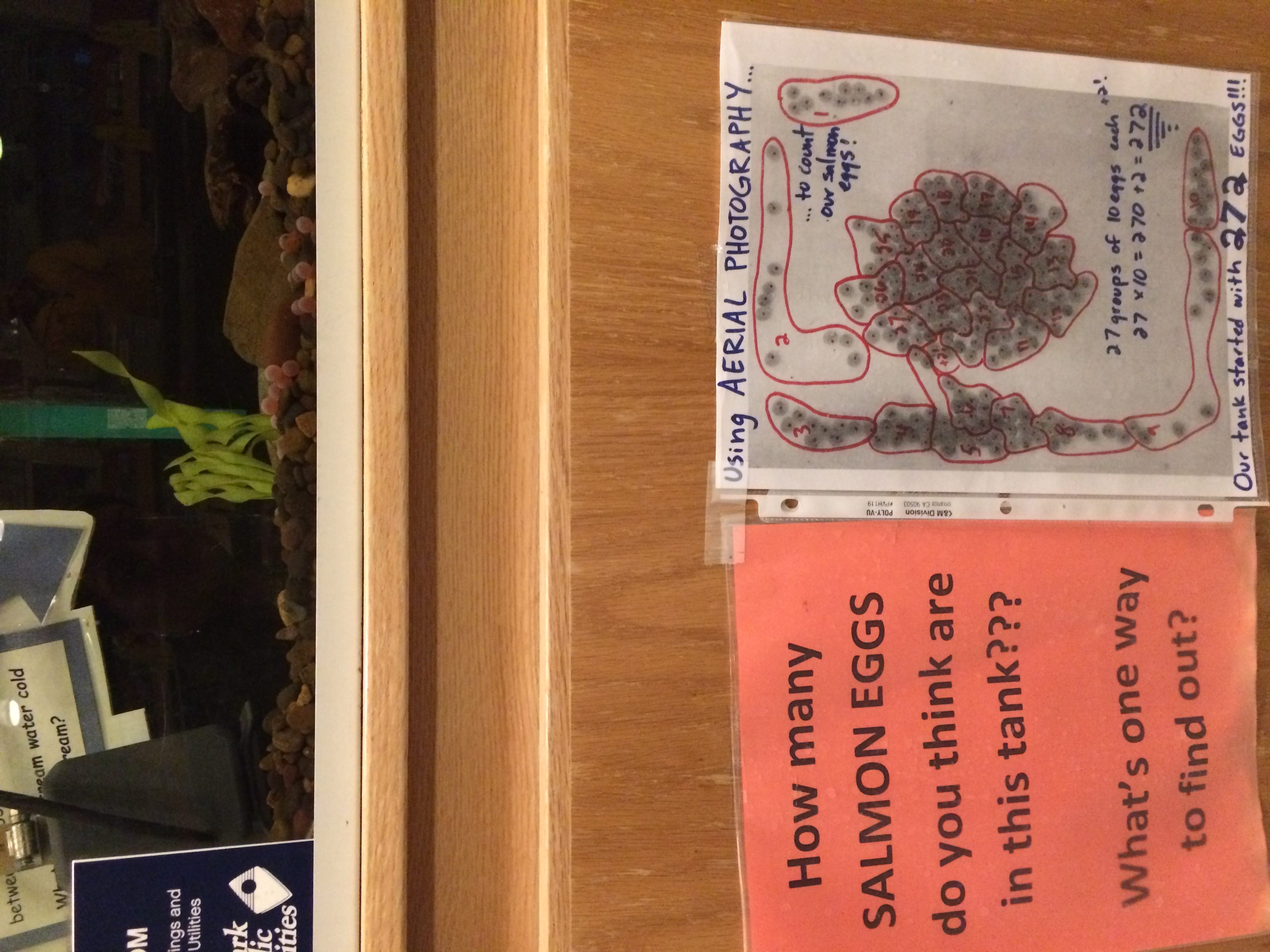
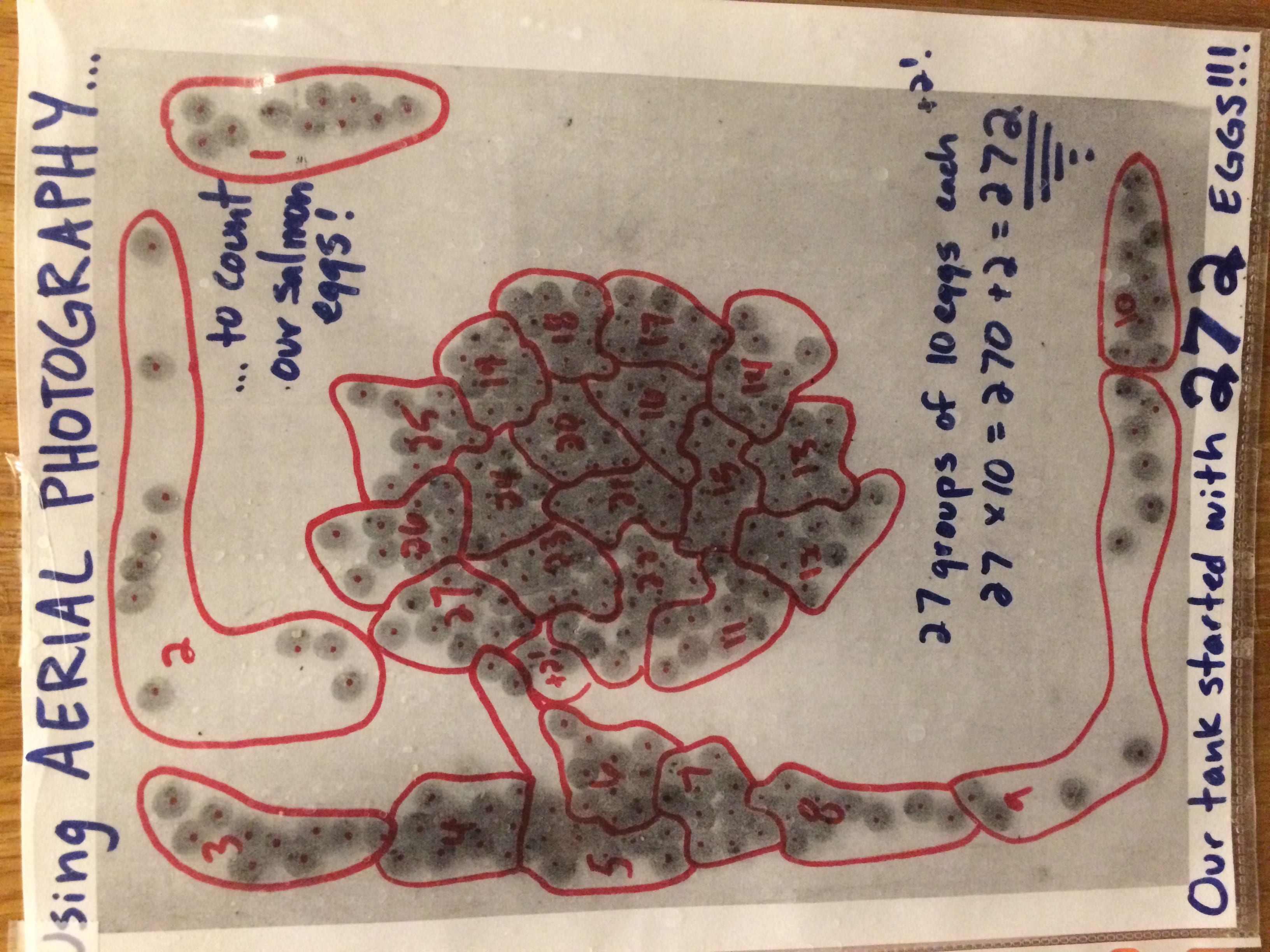
But how many of those will actually hatch? And how many will survive in the tank until the release day? And how many of THOSE will make it back after their long migration to have their own babies? Unfortunately, the answer to that last question is not particularly uplifting. It IS inspiring, though, because it makes me want to do whatever I can to make my salmon’s journey EASIER not harder.
Almost all of your eggs should hatch. The technology is really good with “shocking” and “picking” eggs, which means you should only receive healthy eggs! But what about in the wild? Take a look at the survivorship rates for different rearing environments for salmon (second tab here or p11 of lesson plan). How does your tank compare? What’s different?
Comparing the survivorship rates for different life cycle stages and different rearing environments is a great starting point for discussions about stewardship!
